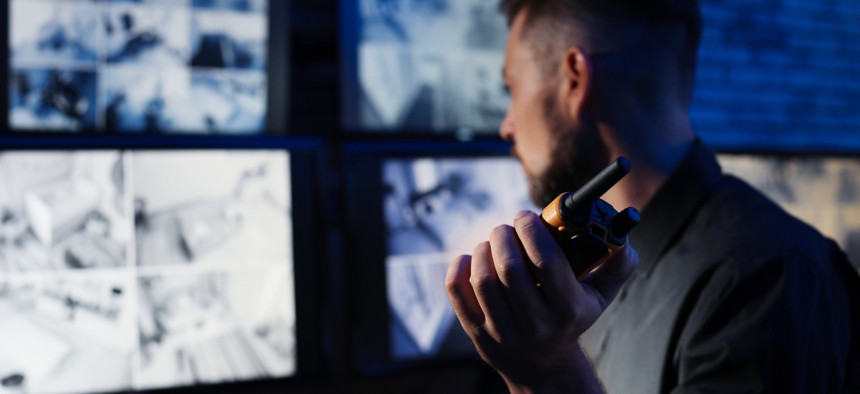NIST Is Staging An Armed Robbery To Improve Video Surveillance

New Africa/Shutterstock.com
Before researchers can test the latest video analytics, they need a variety of footage from different angles, conditions and recording quality.
From ubiquitous cellphone cameras to high-end surveillance equipment, the U.S. is on the cusp of having an organic mass surveillance ecosystem. But with the range of recording quality and the limitations of analytics software, how reliable is video surveillance in protecting public safety?
Per their mission, researchers at the National Institute of Standards and Technology are keen to find out. In order to test the latest video analytics, NIST first needs a data set, and is soliciting for a contractor to stage and film armed robberies that can be used as a baseline for testing.
The scenario, as proposed by NIST, will be a simulated armed robbery of a convenience store. The staged robbery must include a concealed gun—either an exact replica or real, unloaded firearm—that the perpetrator brandishes as part of the scenario. While researchers are interested in a range of data, one of the central goals will be determining whether video surveillance can identify a weapon.
To garner the remaining data, the statement of work requires at least three days of filming with “diverse … visual complexity—both static and dynamic—and event environmental conditions,” according to the statement of work.
Part of ensuring that diversity will include different lighting and weather conditions, as well as picking the right location for the event.
“The venue shall have diverse background environments to contrast the detection object of interest—e.g. pistol—and shall allow for variations to occur in the scene environment as well as in camera type and function,” according to the solicitation. “The venue shall also have provision for movement and positioning of actors to be varied to provide diversity in data.”
For each run of the scenario, the contractor will be expected to set up several cameras of varying quality at multiple vantage points. Each point of view should have several recording devices running simultaneously, ranging from “high-end reference camera to consumer-grade sensors such as cell phones and lower cost [internet-connected] video cameras.”
As the scenario plays out, watchers should be annotating each relevant event, such as the robber entering the store or revealing a weapon. As NIST researchers run analytics on the various recordings, the ability of the image detection software to recognize important events will be matched against these annotations.
The contractor will be expected to furnish all equipment—including cameras, location and props—and all personnel—including program managers, technical personnel and actors.
Bid submissions are due by noon May 28. Questions on the RFQ are due by noon May 17.
NIST contracting officials expect the work to be completed within six months of award.



